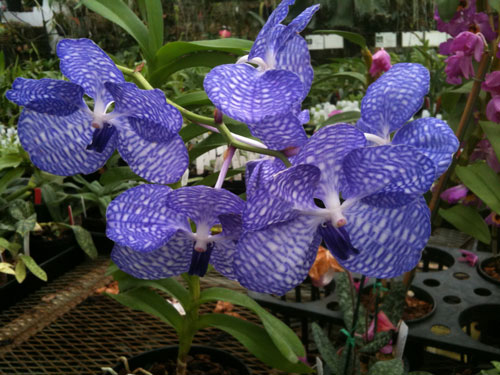Vanda Orchid
The Vanda orchids are known for their large, showy flowers. Like the distantly-related Phalaenopsis, they are monopodial orchids, but typically have many more leaves on the stem. They also like rather different growing conditions: in particular, Vanda light is guaranteed to cause sunburn in Phalaenopsis. These plants have very large, beautiful flowers in a wide range of colors; they have been widely hybridized to produce some very spectacular plants, and there are also many intergeneric hybrids with related orchid types.
Vanda coerulea supra ('Superior Blue' × 'Blue Monday')
(About orchid names)
Vanda coerulea supra, also known as Lord Rothschild's Variety, is the closest you'll find to a blue orchid. (There's no such thing as a truly blue orchid.)
(About orchid names)
Vanda coerulea supra, also known as Lord Rothschild's Variety, is the closest you'll find to a blue orchid. (There's no such thing as a truly blue orchid.)